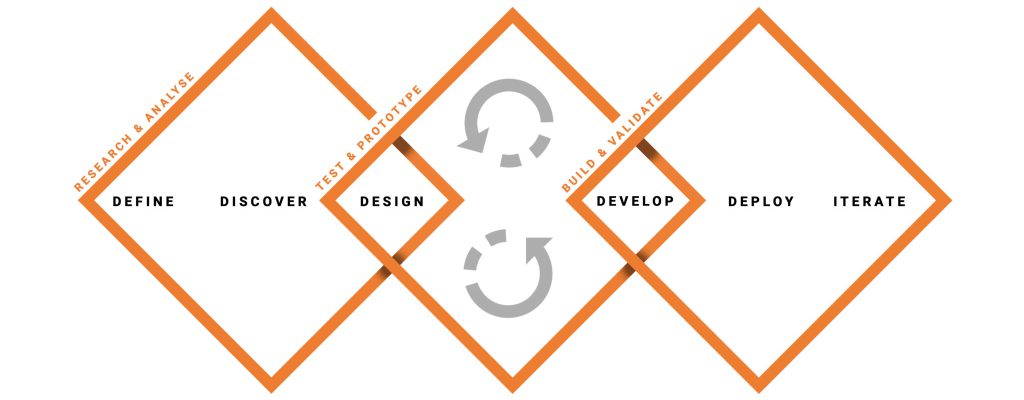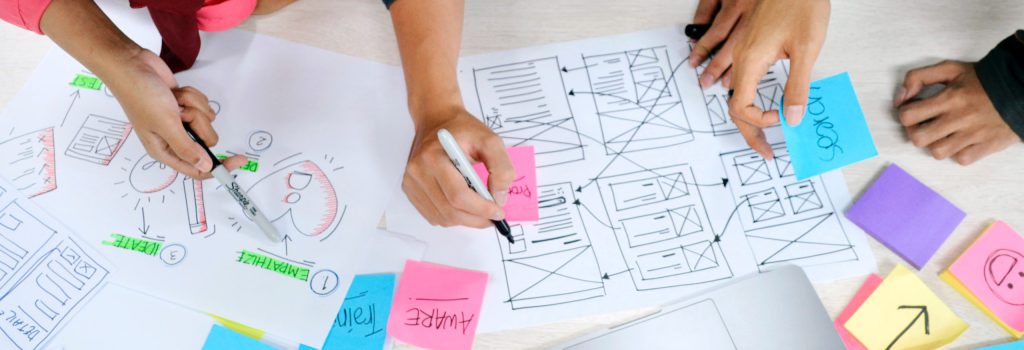
Welcome back to week 3 of our Virtual Training Mastery series around Designing for Impact. Last week we covered how to scope for success – this week we’re moving on to design.
Whilst it’s tempting to jump straight into the content and flow of sessions (don’t worry, we will get to that!), it’s important to lay the foundations for high impact design. So in this article, we’re going to share some models and frameworks which will do just that. We’ll start by digging a bit deeper into the importance of understanding your clients’ ethos, and how to identify it, before sharing some learning frameworks we find useful for effective design.
Learning Ethos & Maturity
During the scoping stage we mentioned the need to identify your clients learning ethos, as this underpins their expectations and guides effective design.
One of the most widely accepted models informing learning ethos is 70:20:10. Developed in the 1980s by leadership researchers Morgan McCall, Michael M. Lombardo and Robert A. Eichinger, it’s based on findings that the most effective learning occurs closest to the point of use. It recommends a ratio of 70% on-the-job experience, 20% interacting with peers, and 10% formal training. Whilst newer schools of thought suggest this balance is outdated in the digital age, and others say 70:20:10 is an aspirational rather than a reality, 70:20:10 was only ever meant to be a guideline, and it’s a useful model to facilitate dialogue with your client, understand THEIR learning ethos and inform design.
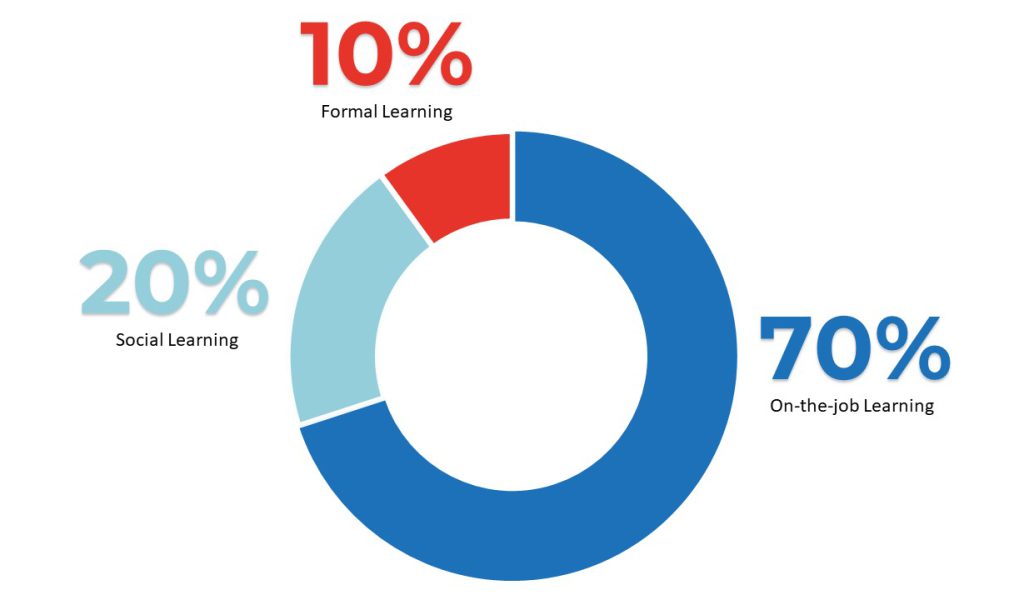
A word of warning here! Clients stated learning ethos can often be more intention than practice, so I highly recommend you question and observe their learning culture before you embark on design.
For example, if you build a programme around a stated 70:20:10 ethos, it’s going to need formal training to be supported by high levels of peer interaction and on the job learning. But if activities like mentoring, coaching, or time for reflection, that help embed the behavioural change, are lacking – the learning won’t meet the desired outcomes.
To help you assess your clients’ actual learning ethos here are some key attributes of high impact learning organisations:
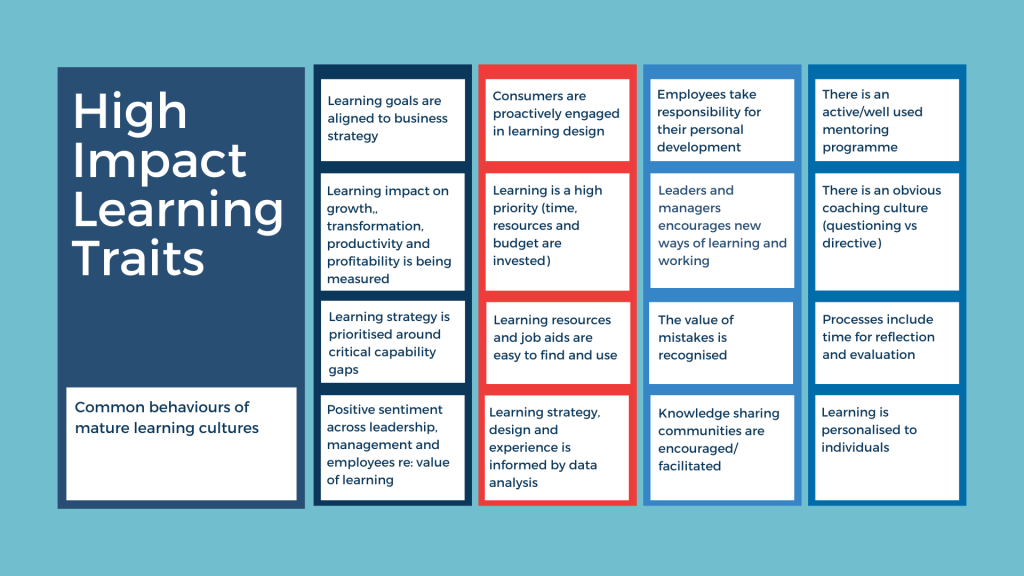
Where a high number of these traits are present, your client has a mature learning culture, where they’re limited or absent, it’s a more transactional environment. Knowing this will help you design the most effective programme for your clients’ current capabilities.
And organisations at different phases of maturity are going to have very different expectations from training providers:
- Mature clients don’t want off-the-shelf courses, they need a learning partner who invests in understanding their specific goals and approach, designs for this and evaluates impact. This takes time, so build this into your plan.
- Transactional clients tend to be more formal training and content orientated, and expect fast turnarounds. You will have to balance managing with meeting these expectations. If it’s appropriate, you can coach them on building in some high performing tactics to increase effectiveness e.g. if they don’t already gain learner input, include that in your design and development stages. But factor time for the changes in mindset, behaviour, systems and processes that will be required to ensure these new tactics stick.
Learning Design & Development Models
Having determined your clients learning ethos, you need to present and explain your development methodology i.e. the steps you’ll follow to ensure your work will be exactly what they want.
ADDIE
A model I like to use here is ADDIE – a well known, highly structured 5 step process for building training and performance support tools. It relies on each stage being completed in order, and focuses on reflection and iteration to capture feedback for continuous improvement. Most other instructional system design models are a variation of this, so clients will be familiar and comfortable with an ADDIE style approach.
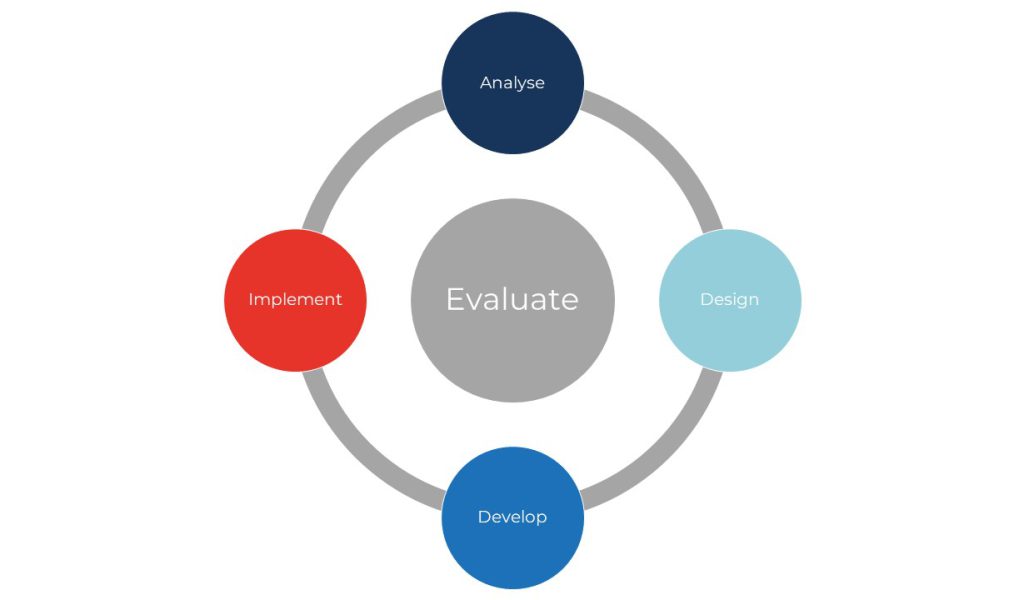
Another model I recently started using is 5Di. Originally created as a tool to help L&D teams partner with internal stakeholders when developing learning, it’s also a great consulting tool for external trainers. It’s been positioned as an alternative to ADDIE, and is quite similar, but I find it more end-user and collaboration focused, with a stronger emphasis on the critical scoping and analysis stages.
(Click here for a free 5Di Toolkit and great video tutorials and templates.)
How and why to use a design framework
These are just some of the many models out there to support your learning design and development. It can be a bit overwhelming to know which ones to use, but they’re not mutually exclusive. I tend to use the three above in conjunction with each other, and I encourage you to explore what works for you and your clients and blend them into your own approach.
A robust design framework will equip you with:
- A tried and tested process that shows various touch points to collect feedback and ensures projects deliver the expected goals
- A clear roadmap that defines the high-level key milestones and timeframe of delivery, as well as surfacing more specific interdependencies around learning material development (for example, in complex blended programmes the self-study content can be produced at the last stage of development when the key activities are locked in)
- A methodology that continuously links back to the objectives, and builds in engagement with key stakeholders throughout – preventing the creation of a programme that fails to meet the objectives – because design framework
Ultimately, a programme based on your clients’ learning culture, developed using a thorough process, will be much more effective at delivering the learning objectives outlined in your scope.
Next time…
With a solid scope and some robust design processes established, next week we’ll share practical tips for high-impact design, and overcoming common learning barriers.
Keep up to speed with the insights as they land by following us on LinkedIn, or if you prefer a fortnightly round-up of everything we’ve been sharing straight to your inbox, sign up below.
Further posts
-
Contact SyncSkills
- +44(0) 1737 779480
- hello@syncskills.net
We do not spam and you can unsubscribe at your convenience.

